Americans can be picky about their fish, and if you ask a typical seafood lover if you can eat carp, you might get a puzzled look in return. This isn’t because carp aren’t edible. They definitely are, and people have been happily eating them for thousands of years. Our hesitancy to eat these fish as Americans has more to do with our own eating habits, and our general lack of understanding of carp.
For starters, a lot of people don’t realize there are two different types of carp in North America (one of which has better meat than the other) and they’ll often lump all these “rough fish” into the same bucket. Others don’t know the history behind carp introductions in the U.S., or they ignore the fact that carp meat has long been a staple in many diets around the world. So, to answer the burning question “Can you eat carp?” we need to first set the record straight.
There Are Two Kinds of Carp in the U.S.
There are two categories of carp inhabiting North American waters today, and neither are native to this continent. The common carp is closely related to goldfish and has been a fixture in U.S. waters since the 1800s, while the Asian carp has been labeled an “invasive” species since its introduction here in the 1970s. Both are edible, but they have different feeding habits that lend different qualities to their meat.
The Common Carp
The common carp (Cyprinus carpio) is what most Americans picture when they hear the word “carp.” These are the torpedo-shaped, golden-yellow fish that can be found in freshwater environments and urban waterways all around the country. Because they’ve been domesticated and bred selectively for thousands of years, there are different varieties of common carp, including koi and mirror carp.
Also known as European or Eurasian carp, the common carp’s historic range was limited to temperate Asia and European rivers (namely the Danube) that flow into the Black and Aegean Seas. They’ve since been introduced around the world, and they have a long history in aquaculture that begins in Western Europe with the Romans, who, like the Chinese before them, raised common carp for food and as decorative additions to their ponds.
Historical studies show that common carp were raised by monks during the Middle Ages, and they were brought to England sometime in the 15th century. The meat of common carp was held in high esteem and was at one point reserved only for nobility and clergymen. This slowly changed as the species spread throughout Europe and became a dietary staple, and when European immigrants started coming to America in droves during the late 1800s, they asked the U.S. Fish Commission (now the USFWS) to introduce common carp here. The government happily obliged.
“There ought to be one person in every county who would raise choice carp as stock fish to sell to others to fatten for their own tables,” Julius A. Poppe, a founding father of carp aquaculture in the U.S. who brought German common carp to his farm in California in 1876, once wrote in a letter to the Commission. “It would be a cheap but sumptuous food and at the same time very convenient, as they are ready to be eaten at all times of year.”
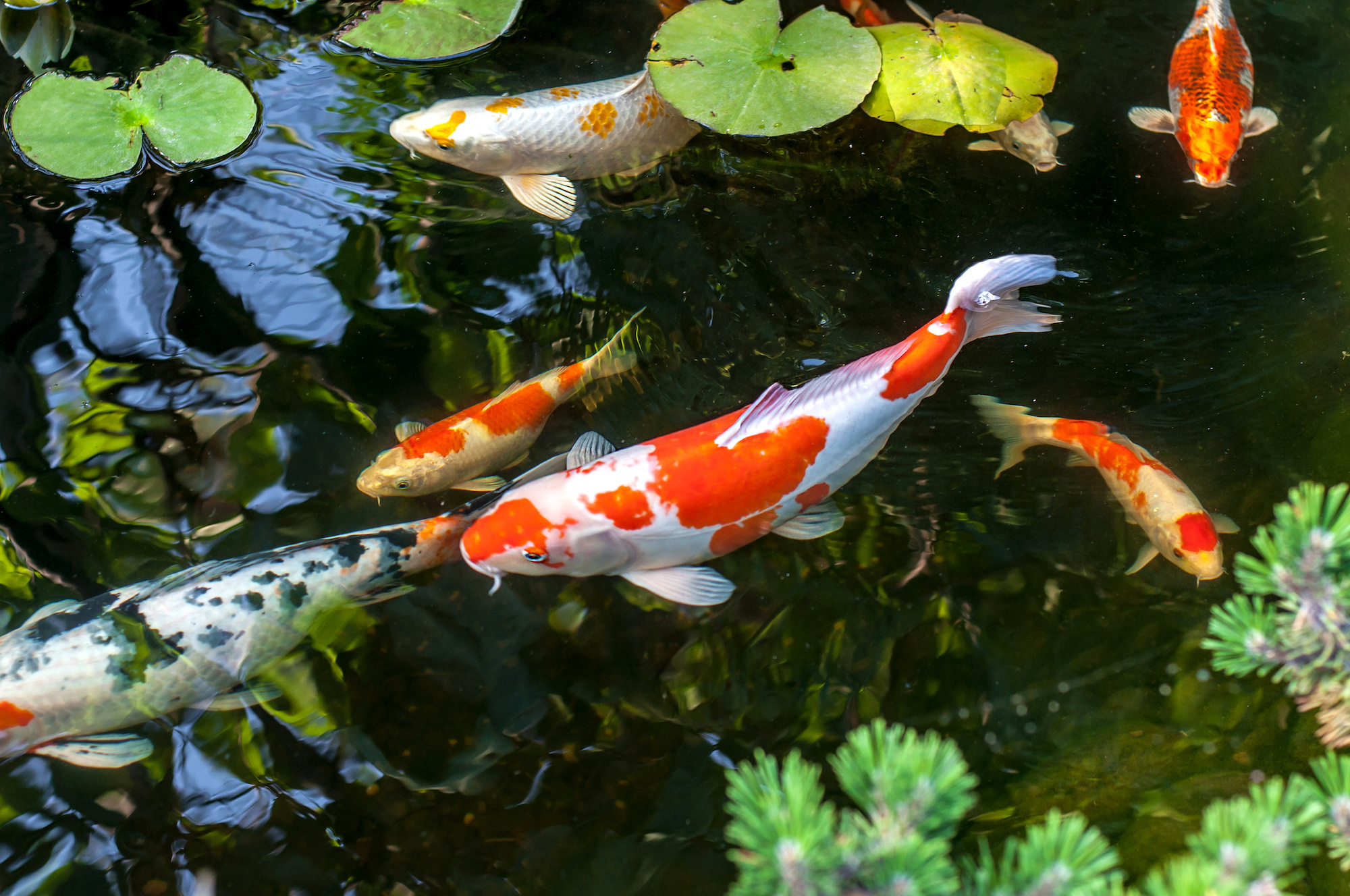
Fast forward more than 200 years, however, and “sumptuous” is not the first word that comes to most Americans’ minds when they think about the lowly common carp. This has a lot to do with their eating preferences.
Common carp are omnivores with down-turned sucker mouths and barbels, which they use to root around in the mud in search of food. They’ll eat insects, crustaceans, and mollusks, but they primarily eat plants. They feed by sucking mud from the bottom, spitting it out, and then eating the suspended particles. Because they often feed in the shallows, they can be sight-casted to, and fly fishing for carp has gotten more popular in recent years.
In addition to lending a muddy taste to their meat, the common carp’s bottom-feeding habits can present real health concerns. The fish will often pick up heavy metals, chemicals, and other pollutants, and many state agencies advise against eating common carp from urban water bodies.
This isn’t to say you can’t eat common carp. It just means you should be careful about where you harvest them and willing to spend some extra time preparing them.
The Asian Carp
While it’s technically a misnomer since common carp also hail from Asia, the other kind of carp found in U.S. waters today are Asian carp. The term encompasses four different species that have been labeled “invasive” by the U.S. Department of Agriculture: bighead carp (Hypophthalmichthys nobilis), silver carp (Hypophthalmichthys molitrix), black carp (Mylopharyngodon piceus), and grass carp (Ctenopharyngodon idella).
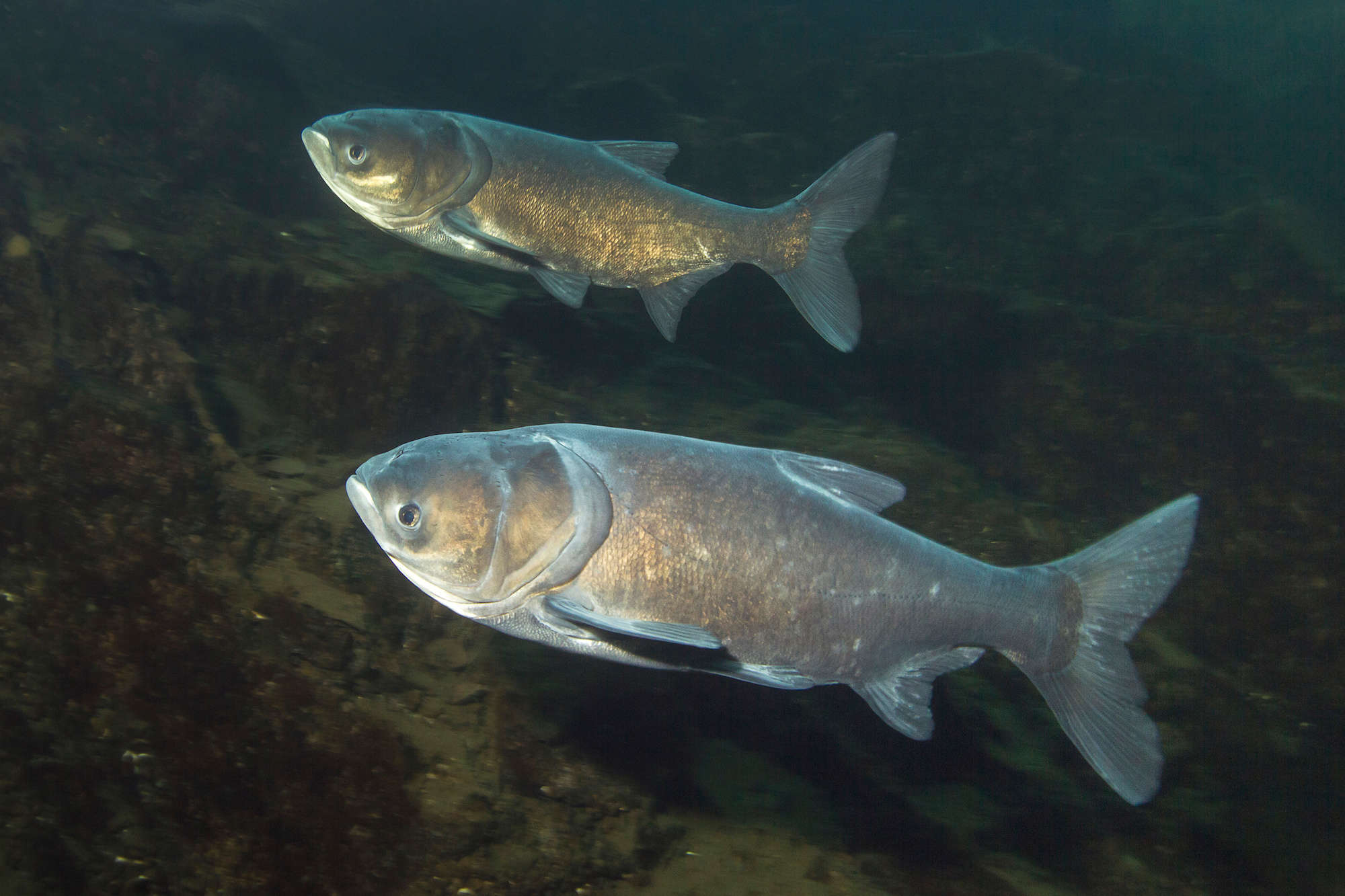
These fish have a much shorter history here in the U.S. They were introduced during the 1970s by private farmers and local governments in the South and Midwest to help clean their commercial ponds and wastewater treatment plants. The fish eventually made their way into the Mississippi River Basin and established a breeding population there. They’re now deemed a serious threat to native ecosystems and are subject to a series of ongoing eradication campaigns.
Bighead and silver carp are the most well-known (i.e. notorious) of the four, and they can be distinguished from common carp by their silvery bodies and by their unusually located eyes, which are situated just below their mouths. They’re known for leaping out of the water and injuring water skiers—in addition to the threats they pose to game fish and other native species.
But long before we introduced these reviled species in the States, they were highly regarded in China as the “four great domestic fishes.” They’re still one of the most widely consumed foods in Asia, with bighead and silver carp accounting for more aquaculture production globally than any other fish species.
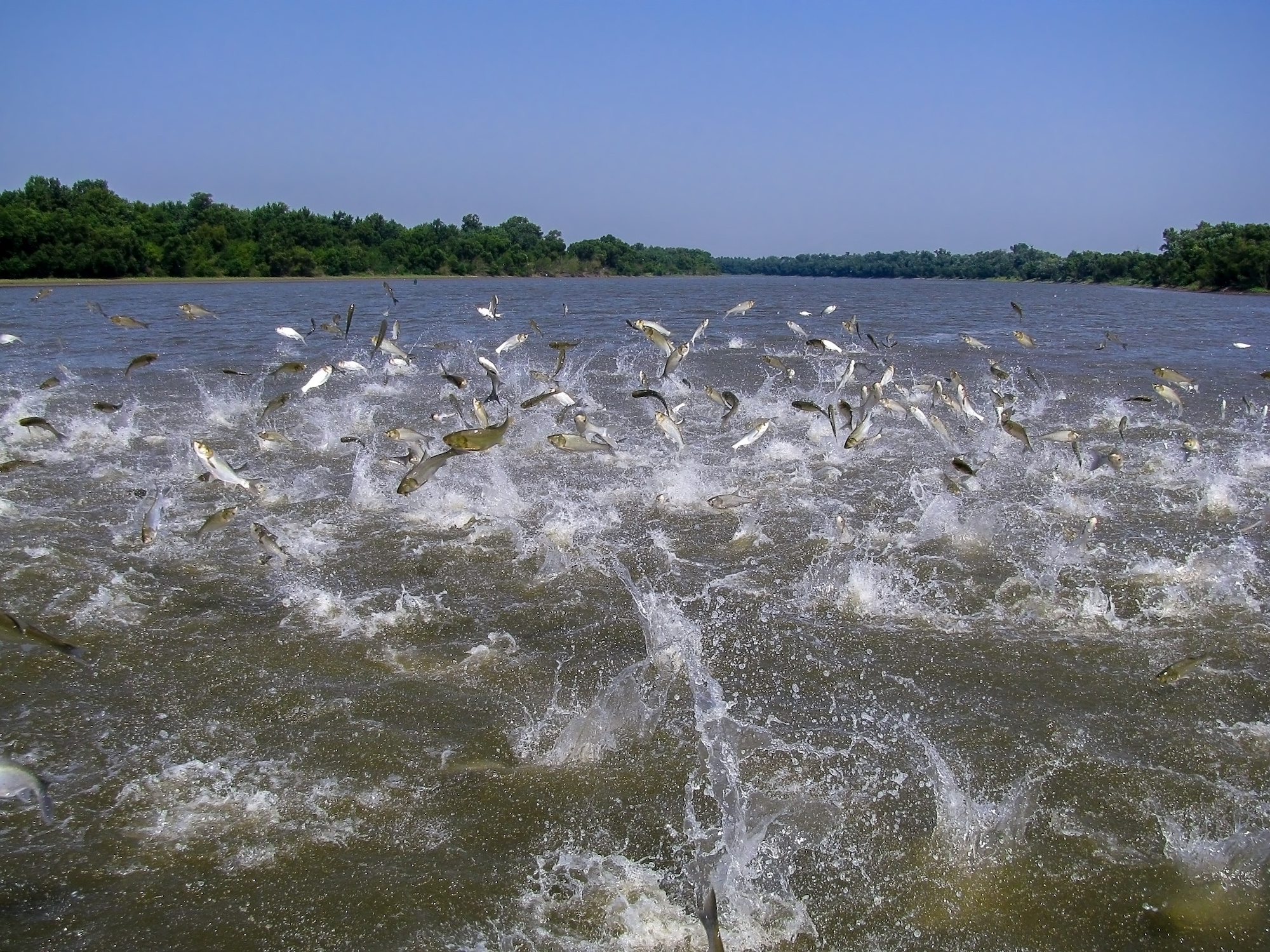
Bighead and silver carp have higher quality meat than common carp because they’re filter feeders, not bottom feeders. They mostly eat zooplankton, which they strain from the water through their gill rakers, and they can consume between 20 and 120 percent of their body weight in a day. This allows these fish to reach huge sizes, and specimens pushing 100 pounds are caught regularly in commercial fishing nets on the Illinois River and elsewhere.
Read Next: Giant Carp Caught by Commercial Fisherman Would Have Smashed the World Record
Because they feed on tiny microscopic plankton, it’s almost impossible to catch invasive carp on a rod and reel, even if you’re using one of the best carp baits. They’re more often targeted by bowfishermen, who either hunt them in the shallows or shoot them with arrows when they’re flying through the air.
Why Don’t Americans Like Carp?
There are a couple different reasons why many Americans will scoff when you ask them if you can eat carp. The first has to do with the different types of carp listed above, as many associate the word with the mud-sucking common carp. However, many of those same critics will readily eat catfish, which are also bottom feeders. So, it’s not all about their feeding habits.
Another reason is that carp are notoriously bony. Both common carp and invasive carp have Y bones, and as a general rule, Americans prefer to eat nice, clean, boneless filets. While it’s possible to remove these bones, it requires significantly more work during processing and/or some creativity in the kitchen. (Click here for a guide on cleaning common carp, and here for a guide on cleaning invasive carp.)
Traditional cooking techniques taken from other carp-eating cultures include grinding the meat and bones into fish balls or cooking the fish whole and eating around the bones. But neither of these are very popular in America because, again, we historically like our fish to be nicely fileted and bone-free.
The Truth About Carp Meat
When prepared the right way, Asian carp have a growing reputation as one of the best tasting fish in freshwater. Unlike the smooth, dark meat of common carp, Asian carp have a flaky, white meat that’s low in fat and similar in flavor and texture (if not better than, some would say) to tilapia and catfish. Their mild, sweet flesh has also been compared to some of our favorite saltwater food fish, including cod.
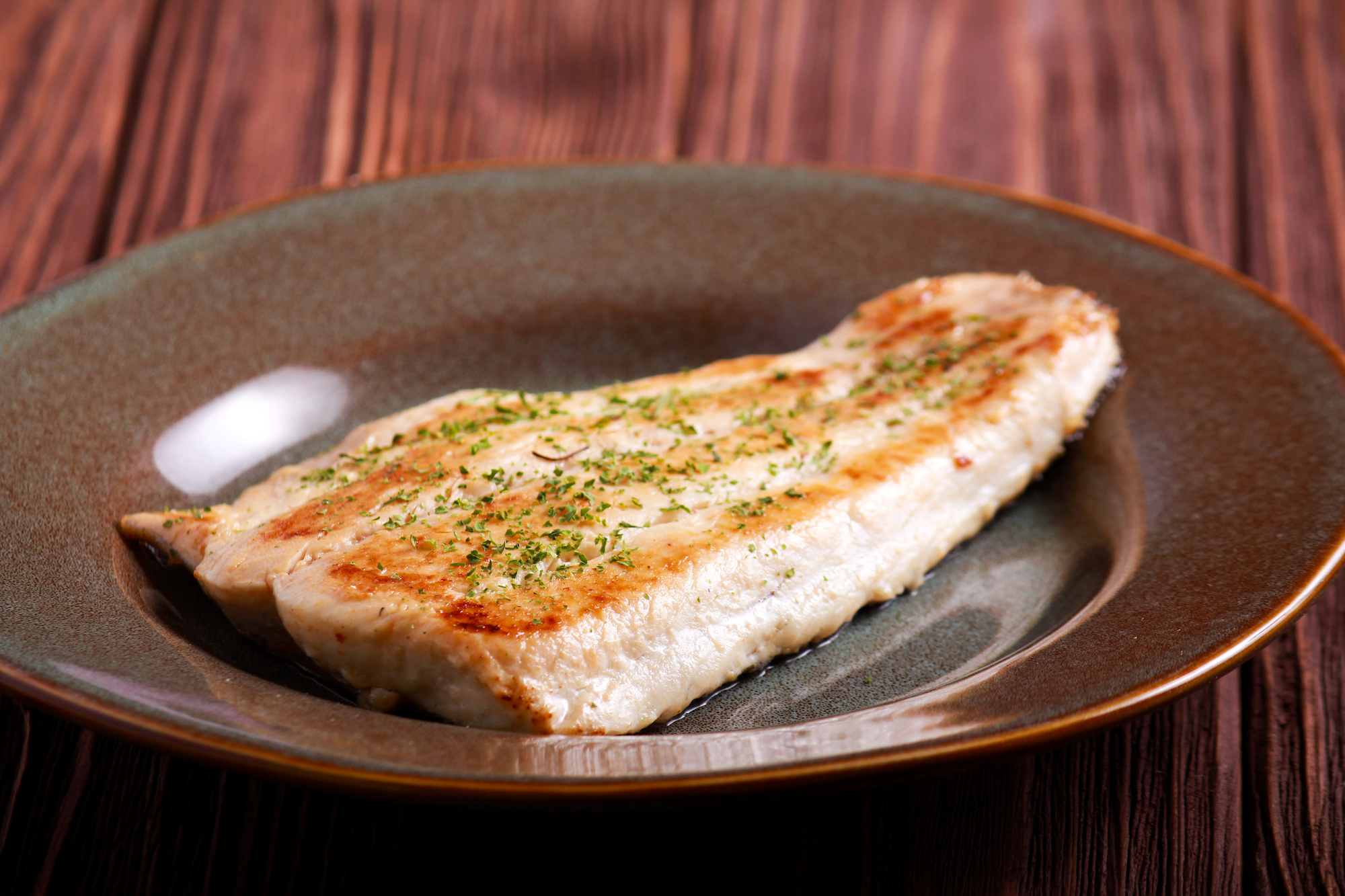
Perhaps, then, it’s the name “carp” that turns most Americans off. Which is why some people in the U.S. are on a mission to re-brand the fish.
The Copi Campaign
In June 2022, after years spent losing the battle against invasive carp, the Illinois Department of Natural Resources announced it would be re-branding bighead carp and silver carp in an effort to make them more palatable to American consumers. The DNR changed their name from “carp” to “Copi,” a nod to how copious they are in the Illinois river.
According to the DNR’s estimates, between 20 and 50 million pounds of Copi could be harvested from the Illinois River each year. This would not only provide a sustainable food source, but it could help prevent the fish from reaching the Great Lakes, where they could threaten the region’s multi-billion-dollar commercial fishing and tourist industries.
In its announcement of the re-brand, the DNR pointed out that it isn’t the first time a fish has been rebranded to make it more palatable to everyday consumers.
“Changing a fish’s name has been a tried-and-true strategy for other fish,” the DNR acknowledged in a news release, explaining that orange roughy was formerly known as slimehead, and that Chilean sea bass is just another name for the Patagonian toothfish.
“Copi is a great name: Short, crisp, and easy to say,” DNR Director Colleen Callahan said in 2022. “It’s a tasty fish that’s easy to work with in the kitchen and it plates beautifully. Every time we’ve offered samples during the Illinois State Fair, people have walked away floored by how delicious it is.”
FAQS
Is carp a healthy fish to eat?
That depends less on the fish itself and more on where it was caught. Common carp aren’t inherently unhealthy, but those harvested from polluted water bodies can pick up contaminants in their meat and are not considered safe to eat.
Invasive carp or copi are billed as a heart-healthy fish rich in Omega 3s. They’re meat is also milder and flakier than the common carp.
What is a carp fish similar to?
The common carp is actually a member of the minnow (Cryprindae) family. They’re closely related to goldfish and have been bred selectively, which has resulted in various “designer” carp species like mirror carp, koi, and leather carp.
Is carp a catfish?
No, carp are not the same as catfish and the two freshwater species are unrelated. They do have some things in common, however. Both are omnivorous bottom feeders that can grow to large sizes. Common carp and catfish both have barbels, which help them find food in low light conditions and murky water.
Final Thoughts on Eating Carp
You most certainly can eat carp, and humans have been chowing down on carp for thousands of years. Some carp species make better table fare than others, however. The two filter-feeding Asian carp species have better-tasting meat than the bottom-feeding common carp, which can contain high levels of contaminants when harvested from polluted water bodies.
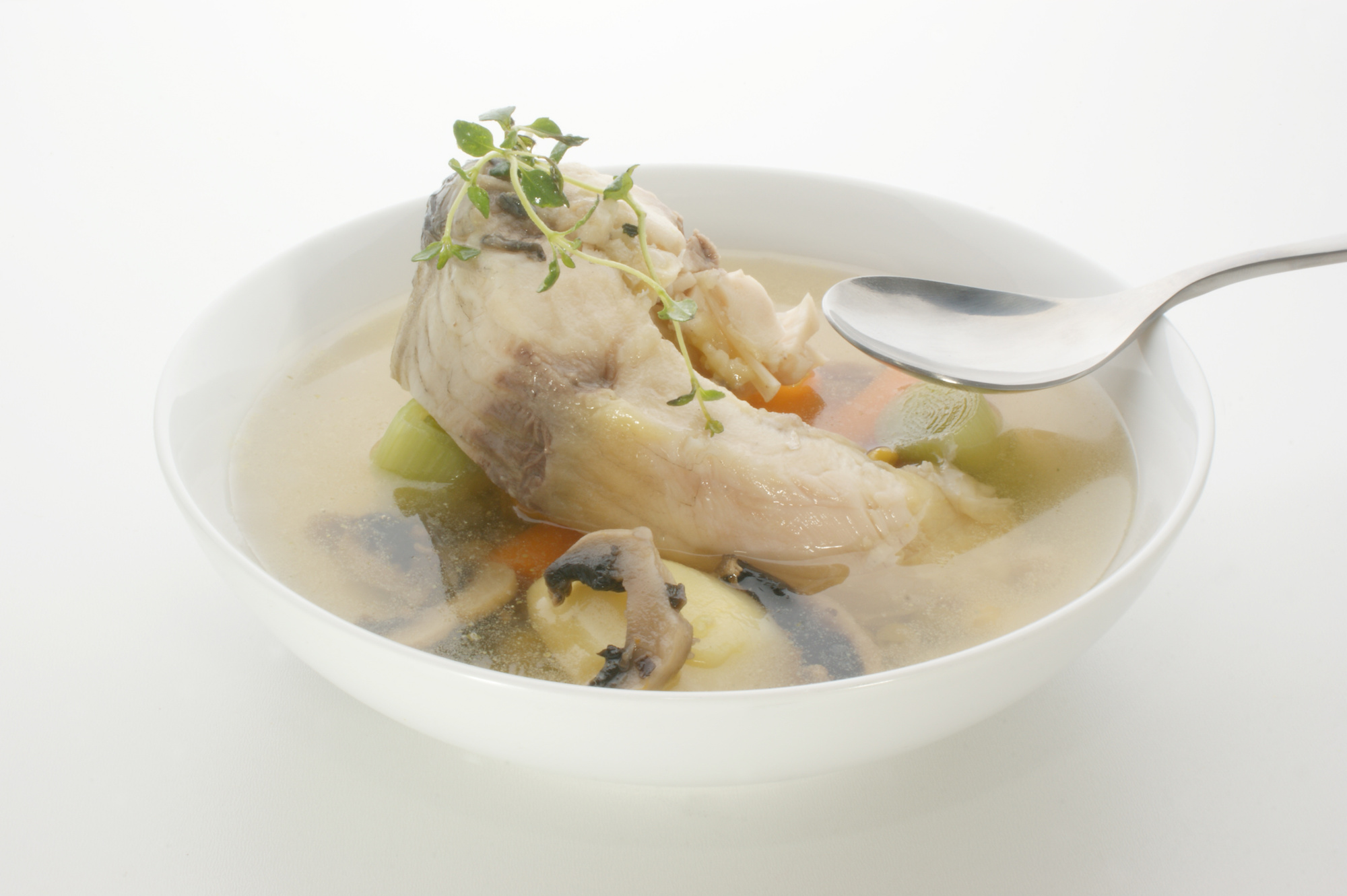
Aside from the quality of their filets, the two fish are easily distinguished by their general appearance and the location of their eyeballs. Common carp have eyes on the top half of their head, while an invasive carp’s eyes are located on the bottom half, just below their mouths.Thanks to a new state-run campaign that re-named silver and bighead carp to copi, they’ve also grown in popularity as a food fish. These carp have a mild and flaky white meat that lends itself to countless different recipes. They’re also overly abundant invasive species that damage native ecosystems. Which means that not only can you eat carp…but maybe you should.
